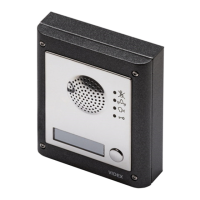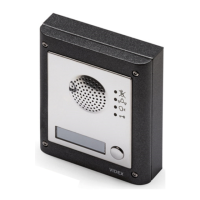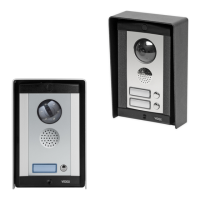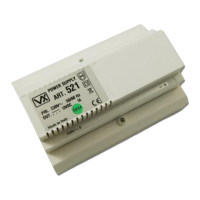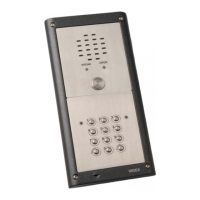66250754-4G-EN - V2.0 - 28/03/22
- 53 -
4000 Series GSM Audio Intercom - Technical Manual
4000 Series GSM Audio Intercom with Proximity
This is particularly useful when programming additional fobs or cards into a GSM intercom with existing fobs and cards already
programmed into it, but the locations of where they are stored is unknown. Using the FOB programming text string, but omitting
the nnn (000 - 999) memory location from the command the following texts can be used to program fobs or cards to the next free
memory location and conrm where the fob or card will be stored.
1111FOB”site”,”user” Store fob/card in the next memory location available. The “site” and “user” code is the number
taken directly from the fob/card.
1111FOB”site”,”user”? Store fob/card in the next memory location available and send a conrmation text back to the
sender with the memory location of where the fob/card is stored. The “site” and “user” code is the
number taken directly from the fob/card.
STORE A FOB/CARD IN A KNOWN LOCATION OR THE NEXT AVAILABLE LOCATION WITH AN ACCESS LEVEL FOB
The same FOB programming command can also be used to assign an access level to a proximity fob/card. An access level can be
assigned to fobs/cards and stored directly to a memory location by including nnn (000 - 999) in the command string or they can
be stored in the next available location by omitting the memory location from the command string (see examples below). The
following FOB programming commands can be used.
1111FOBnnn”site”,”user”An Store fob/card in memory location nnn and assign access level An, where memory location nnn
= 000 - 999 and where the access level An = A0 - A9. The “site” and “user” code is the number taken
directly from the fob/card.
1111FOBnnn”site”,”user”An? As above and also send a conrmation text back to the sender with the location of where the fob/
card is stored and the access level it is assigned to.
1111FOB”site”,”user”An Store fob/card in the next memory location available and assign access level An, where the access
level An = A0 - A9. The “site” and “user” code is the number taken directly from the fob/card.
1111FOB”site”,”user”An? As above and also send a conrmation text back to the sender with the location of where the fob/
card is stored and the access level it is assigned to.
Example 1:
Programming a 955/T or 955/C with no site code, a 5 digit user code of 21092, storing it in memory location 004 and
assigning it to access level A5, the following text can be sent to the GSM intercom:
1111FOB004”0”,”21092”A5?
For these fob/card types insert a 0 for the “site” code. Also including a ? at the end of the programming command the
GSM intercom will reply with the following text:
FOB 004 = 0000021092,A5
VIDEX 4G
Example 2: Programming a PBX1E or PBX2 with a 3 digit site code of 241, a 5 digit user code of 15432, storing it to the next free
memory location (if locations 000 - 096 are occupied) and assigning it to access level A3, the following text can be
sent to the GSM intercom:
1111FOB”241”,”15432”A3?
Including a ? at the end of the programming command the GSM intercom will reply with the following text:
FOB 097 = 0024115432,A3
VIDEX 4G
FIND A FOB OR CARD FDF
The nd a fob or card feature allows the user to search and nd the fob/card location (between 000 - 999) of where a proximity fob
or card is stored in the GSM intercom. It locates the fob or card using the 5 digit user code printed on the fob (see the following
example). The following text message can be used.
1111FDF”nnnnn”? Find the fob/card location with user code nnnnn, where nnnnn = user code (5 digit user code
printed on fob/card).
Example:
Find fob/card location of card no. 12345, the following text can be sent to the GSM intercom:
1111FDF”12345”?
The GSM intercom will reply with the following text:
STORED IN nnn
VIDEX 4G
where nnn = the fob/card location of where the fob/card is stored.
DELETE A FOB OR CARD WITHOUT KNOWING ITS LOCATION DEF
This feature allows the user to delete a fob or card without knowing the memory location of where it is stored. The feature uses the 5
Programming the GSM Intercom
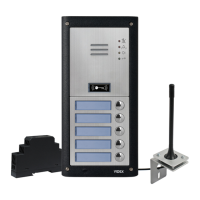
